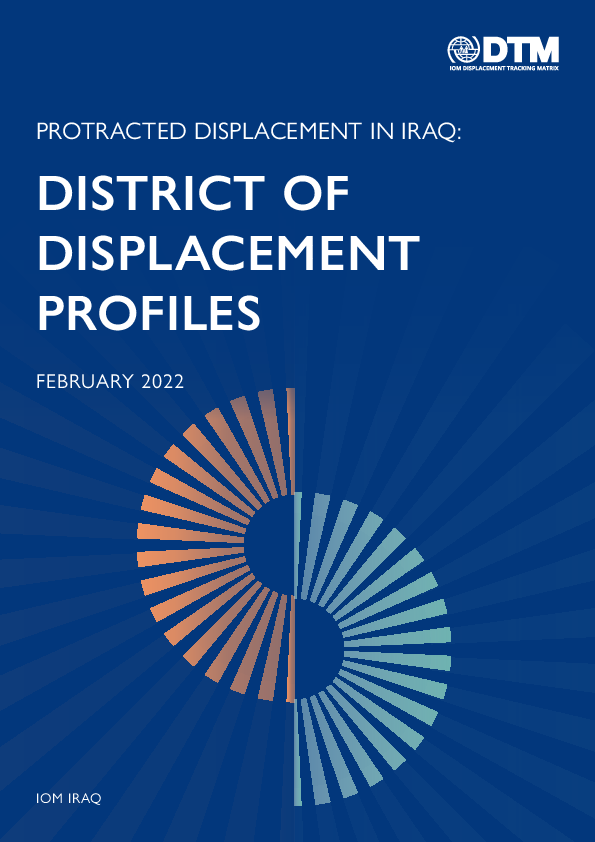-
Countries
-
Data and Analysis
-
Special Focus
-
Crisis Responses
Iraq — Protracted Displacement Study: District of Displacement Profiles (February 2022)

Contacto
DTM Iraq, iraqdtm@iom.int
Idioma
English
Ubicación
Iraq
Fecha de instantánea
Jan 01 2021
Sep 30 2021
Actividad
- Other
In April 2019, the International Organization for Migration’s (IOM) Displacement Tracking Matrix (DTM) unit in Iraq published a report, “An In-Depth Analysis of the Main Districts of Displacement.” The aim of this report was to complement the information presented in a separate in-depth analysis of return barriers faced by IDPs presented in the report, “Reasons to Remain: Categorizing Protracted Displacement in Iraq,” which was published in November 2018.
In January 2021, IOM Iraq then produced an updated in-depth report on return barriers, “Protracted Displacement in Iraq: Revisiting Categories of Return Barriers.” This report drew on data that had been collected since November 2018 in locations of displacement and return, and is centred on a categorization framework that highlights the different reasons why the remaining 1.2 million IDPs remained displaced at that time. The report examined the extent that IDPs across the country face different types barriers to returning to their area of origin. However, the report featured data aggregated to the levels of overall (national) as well as governorates and, on some occasions, districts. However, given that the remaining IDPs reside in 105 districts spread across 8 governorates, district level information that was presented in the report was limited, including how conditions vary between subdistricts within a particular district.
As of 30 September 2021, a total of 204,344 IDP households (1,189,581 individuals) remain displaced across the country – amounting to 20 per cent of all those who became displaced during the period of ISIL conflict (2014-2017). These IDPs reside in a total of 2,842 locations across 105 districts and 8 governorates across the country. Amongst the remaining IDPs, 79 per cent reside in the top 15 of these districts. This document is comprised of 15 four-page profiles of each of these districts.
